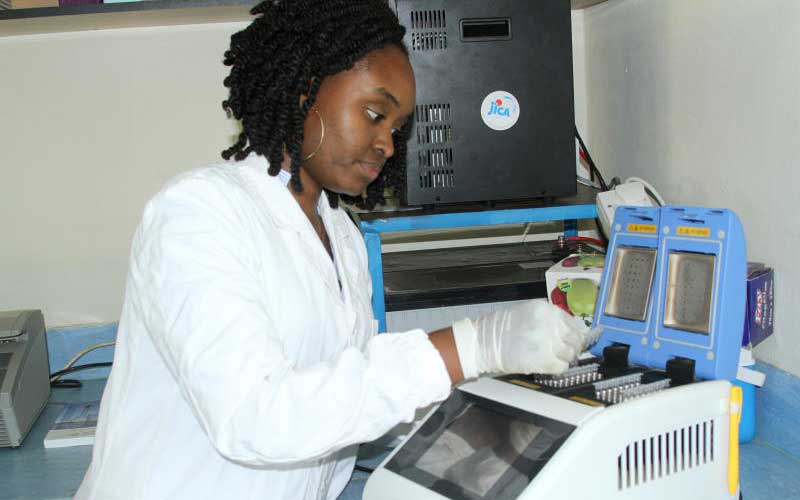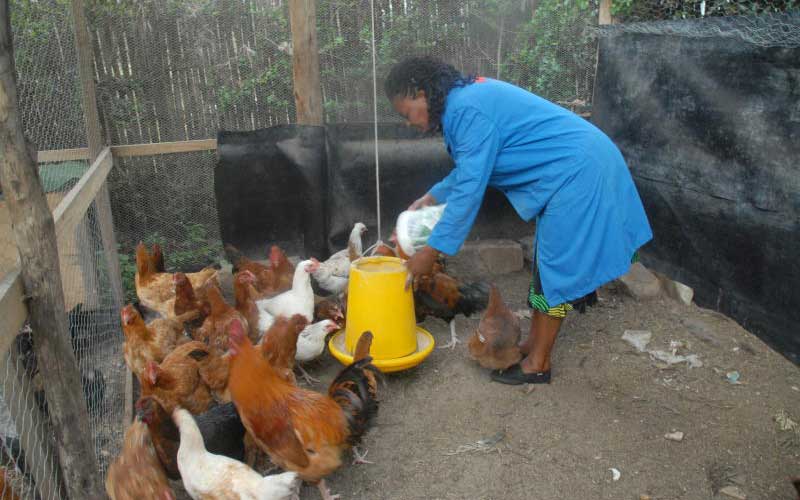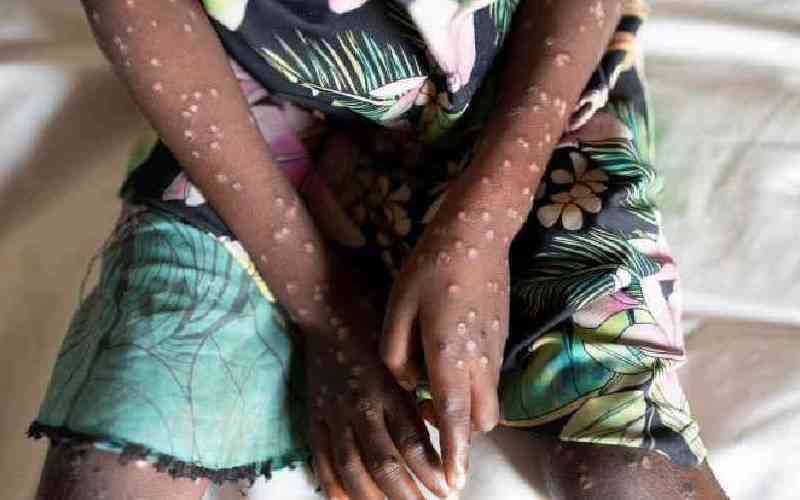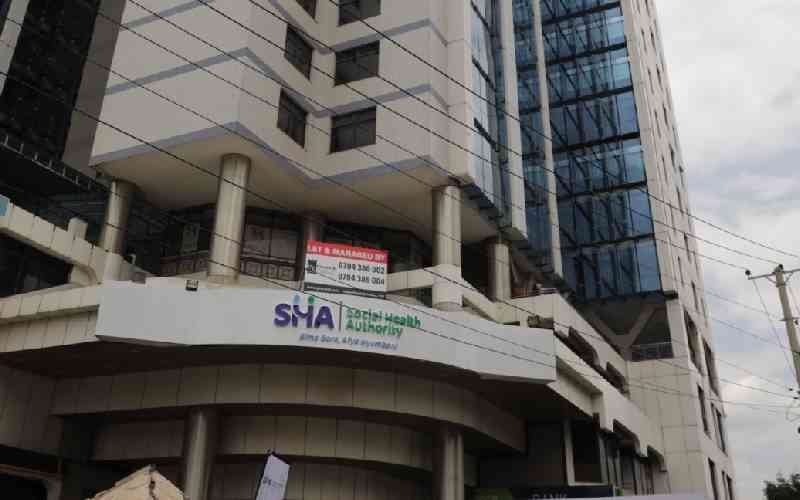
Different breeds of tiny chicken still roam Lorengelup, Kalokol, Eliye and other far-flung villages in Turkana.
They are bantam chickens, a miniature version of regular chicken that vary in size from one fifth to two thirds the size of an average chicken.
For their small size, the chickens, believed to have been introduced in Turkana by traders who travelled from Asia through Egypt to the northern part of Kenya many years ago are said to have adapted to the extremely hot environment.
There are other indigenous chicken in these parts of Turkana which contain heat stress tolerant genes, according to a study conducted by researchers at Jomo Kenyatta University of Agriculture and Technology (JKuat). They include the naked-neck and frizzled chicken.
But the number of these chicken varieties with inherent ability to contain heat stress is fast declining and is raising concerns of heat stress management in poultry, according to the JKuat researchers.
Identifying this gap, the researchers led by Grace Moraa, a PhD student at the research institution are analysing the physical and genetic make-up of indigenous chicken to identify genes important in withstanding heat stress.
Results of the study dubbed ‘Genetic diversity of indigenous chickens in relation to heat stress’ will then inform establishment of a breeding programme for chicken that can withstand heat stress.
Because of inbreeding and the resulting genetic erosion in chickens, few poultry farmers in far-flung villages keep purely indigenous chicken which still have heat stress-tolerant genes, says Moraa.
“There is increasing manipulation of the genetic make-up of chicken because of introduction of exotic varieties and the many breeding activities in poultry farming. As a result, we continually face a conservation threat of varieties that can withstand heat stress and other poultry diseases,” says Moraa.
According to the JKuat geneticist, many Kenyan poultry farmers now rear exotic varieties which are not adapted to the local ecological conditions including inability to withstand heat stress.
“The biggest challenge with exotic varieties is that they are bred in places where ecological conditions are different from what we have here in Kenya. That is why the exotic chickens have to be reared in modified conditions,” she says, adding that not all farmers, especially small scale ones can afford modified conditions for these chickens that demand extra attention.
Turkana County laboratory technologist and extension officer Celine Ekitela says poultry farmers in Turkana are quickly losing their hold of indigenous varieties, which to her, are better adapted to the extreme heat in the area.
“For ages, farmers in Turkana reared chicken that never struggled with excess heat. But farmers who are now rearing broilers and other chicken that were recently introduced in these hot regions spend a lot of money on medication, special feeds and special coops because the chicken easily die when these conditions are not met,” says Ekitela.
According to Ekitela, poultry farmers in inaccessible villages in Turkana that are alienated from other communities still have indigenous chicken.
It was from these villages that the JKuat researchers sampled indigenous chicken for analysis at the JKuat labs. Other agro climatic zones from which the 296 chickens were drawn for the study included Lamu, Mt Elgon catchment and regions around the Lake Victoria basin.
Most chickens under study exhibited presence of mixed phenotypes including frizzled, naked-necks, bantam, rumpless and the crested. The researchers also identified barred feathers, feathered shanks and the Kuchi phenotypes that are equally important to heat stress.

According to Moraa, some chickens had more than one phenotype. A frizzled chicken, for instance, would also have a naked neck. In areas around Mt Elgon, some mottled chicken also had feathers in their shanks.
Different phenotypes indicated adaptations to different climatic conditions. All the 39 bantam phenotypes in the study were identified in the chicken from Turkana, accounting for 100 per cent of all the sample population. Studies indicate that due to their small size, bantam chickens have a better capacity for heat dissipation, a property that gives them a survival edge in hot and arid regions like Turkana.
Other adaptations to hot areas are naked-necks and frizzled chicken. Frizzled chickens, for instance, have less plumage density and fewer feathers that are curled outward to reduce feather coverage. This leads to less heat being conserved by the chicken.
On the other hand, 13 of the 14 feathered shanks were identified in chickens collected around Mt Elgon basin. This, studies indicate, is an adaptation to cold climate.
Apart from the phenotypic studies, the researcher also conducted a molecular study to ascertain the genetic composition of indigenous chicken in relation to heat stress.
Moraa who is currently attached to the university’s molecular lab for her PhD, stresses the importance of conserving heat stress important genes.
“Not many places in Kenya still have hardy indigenous chicken that can withstand heat stress. We therefore need to start thinking of how to conserve what we have through a sustainable breeding programme,” she says.
Heat stress, a condition caused by high temperatures is a serious problem among poultry farmers as it results in a drop in egg and meat production. Studies indicate that older birds, highly improved and broilers are more susceptible to heat stress.
Symptoms of heat stress include laboured breathing and panting, lifting wings away from body and convulsions in chicken.
Farmers notice reduced growth rates, a drop in egg production, and hatching rates. The chickens also hatch smaller eggs that have thinner shells.
Due to congestion of poultry in their structures, farmers find it hard to manage heat stress in chicken.
Supervising the study, Dr Sheila Ommeh, a molecular geneticist at JKuat’s Institute of Biotechnology Research (IBR) says changing times require a proper breeding programme that will be informed by research to conserve chicken that can withstand heat stress.
“The consequences of climate change are already here with us and in poultry, we need chicken that are able to withstand heat stress,” says Dr Ommeh.
She adds: “There are different phenotypes in many parts of Kenya including the bantam, naked-neck and fizzled chicken. But these chickens are fast disappearing due to inbreeding. And because of this genetic erosion, we risk losing varieties that can withstand harsh environmental conditions.”
 The Standard Group Plc is a multi-media organization with investments in media platforms spanning newspaper print
operations, television, radio broadcasting, digital and online services. The Standard Group is recognized as a
leading multi-media house in Kenya with a key influence in matters of national and international interest.
The Standard Group Plc is a multi-media organization with investments in media platforms spanning newspaper print
operations, television, radio broadcasting, digital and online services. The Standard Group is recognized as a
leading multi-media house in Kenya with a key influence in matters of national and international interest.











